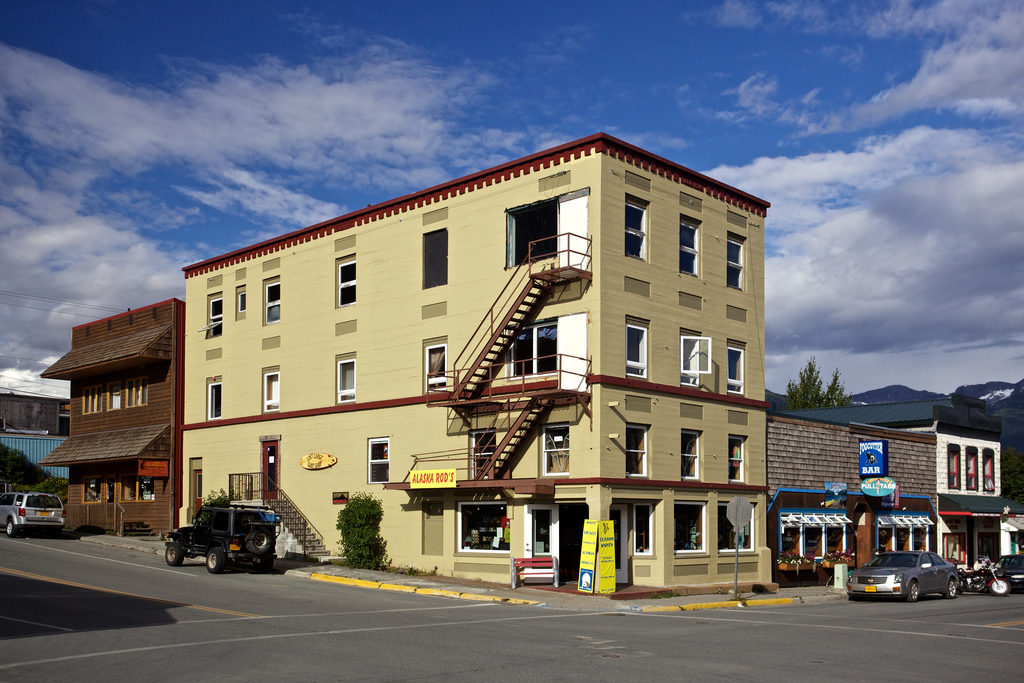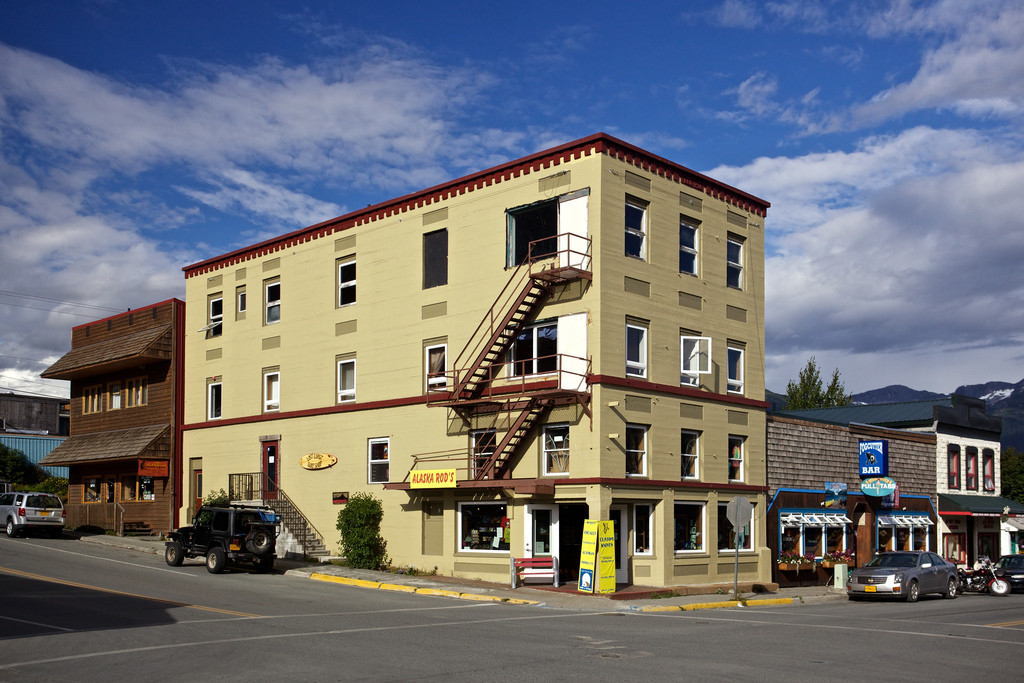
The Chisel Building is the tallest building in downtown Haines. It was built before borough height restrictions were in place. (Christopher Cotrell/Flickr Creative Commons)
How tall is too tall when it comes to buildings in Haines? At its latest meeting, the planning commission said height limits should be more restrictive than they are right now. Planners proposed putting restrictions on areas of town that have none.
Initially, the commission was leaning toward loosening height restrictions. Right now, construction is limited to 30 ft. in every building zone except General Use, Mud Bay and Lutak Rural Residential. General Use and Mud Bay have no height restriction and Lutak has a maximum of 35 ft.
The main concern when this first came up was about taller buildings potentially disrupting neighbors by blocking views. But then it became a safety concern.
In January, Haines Volunteer Fire Department Chief Brian Clay wrote a letter to the commission in opposition to raising height limits. He said structures are limited to 30 ft. for a reason. The department’s ladders are 24 ft. tall. He told the commission the maximum height they can safely serve is 30 ft., and increasing building heights would “put Haines residents at greater risk of fire hazards.”
Clay’s concerns were backed up by a letter from the state fire marshal.
That’s why, instead of loosening restrictions, the planners started looking at tightening them. Those zones that aren’t currently limited to 30 ft. would be.
Commissioner Brenda Josephson was opposed to that.
“I can’t support a change that’s going to make it more restrictive, especially out the road,” said Josephson. “So I would say if we’re not willing to relax it, not to pass this change.”
She presented information about how sprinkler systems can help alleviate fire safety concerns in taller buildings.
Rob Miller pushed back against leaving the code as is.
“It’s a safety issue above 30 ft. – or 33 [ft.] or whatever, then I think it would be irresponsible to leave it the way it is,” said Miller.
Jeremy Stephens advocated for allowing builders to get a conditional use permit to go over 30 ft.
“I’m just not a fan of restrictive code in this case because there’s a lot of different scenarios that have been mentioned to us,” said Stephens. “And if we make a conditional use permit required to go beyond 30 [ft.], the builder is going to have to address many issues.”
That was backed up by longtime local fireman Roc Ahrens, who said the code should be more flexible, allowing the fire department to assess requests to go higher.
Right now conditional use permits are allowed in code for the Heavy Industrial zone and significant structures. Stephens wanted to change that to every zone, without imposing an upper limit.
Interim manager Brad Ryan said that kind of change could be challenging for borough staff.
“You understand I’m on day three in an appeal on a conditional use permit now? So yeah, I think you’re stretching the expertise of staff and the manager,” said Ryan.
Ryan was referring to what turned out to be a 10-hour meeting taken up mostly by citizen appeals on a resource extraction permit.
Commission chair Rob Goldberg was against broader allowance for conditional use permits.
“Conditional use permits should be a special thing. It shouldn’t become a regular occurrence,” said Goldberg. “Especially if there’s no upper limit put on this. I’m just not comfortable with that. I think it’s going to cause a lot of problems.”
The commission voted 5-2 against making that change. The main motion to make height limits more restrictive motion passed 5-2.
That means, with assembly approval, builders in the General Use, Mud Bay, and Lutak zones will have to stay under 30 ft.









